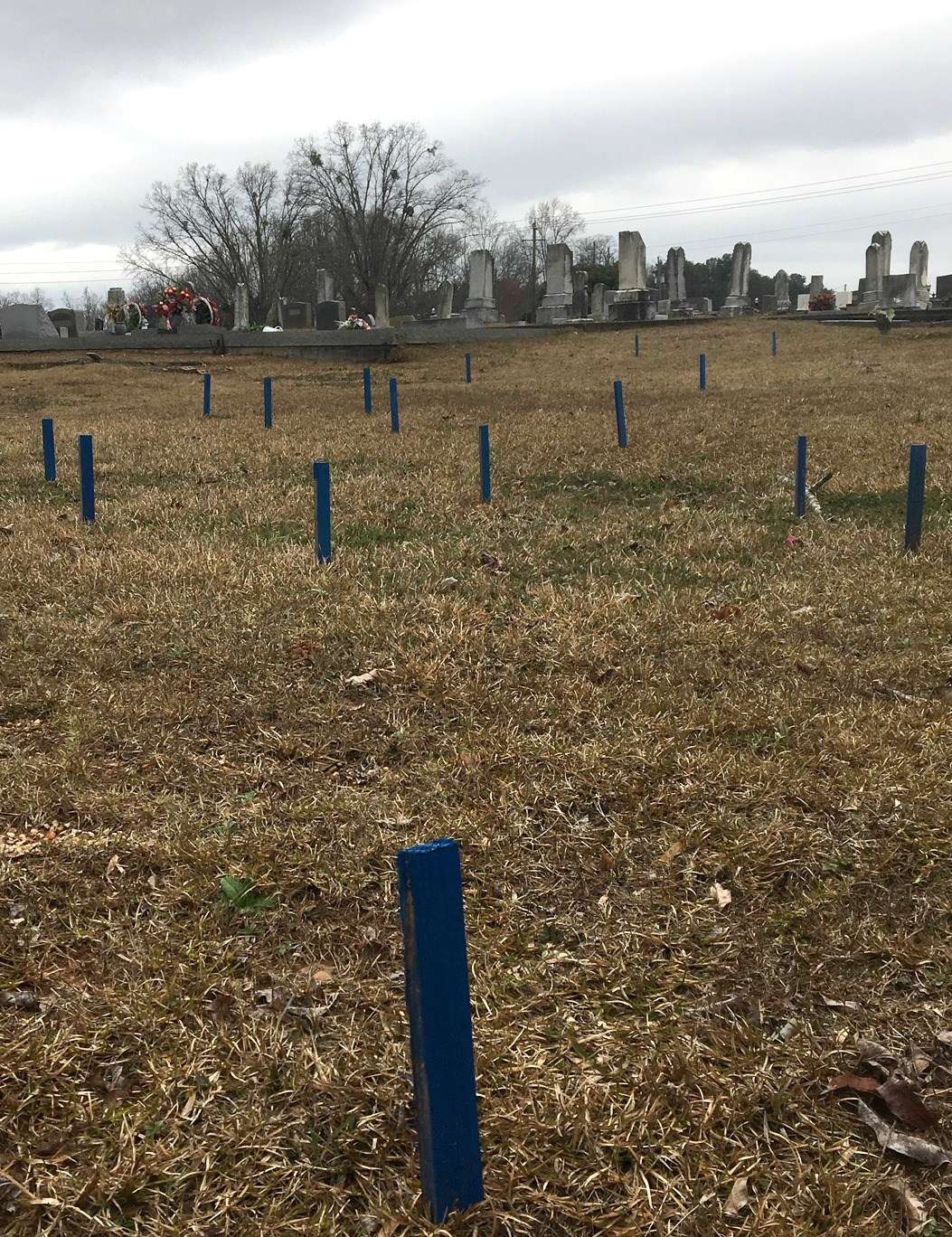By Brandon Hembree

In downtowns all over Georgia, we walk by historic buildings all the time. These buildings reflect our past and certainly hold important memories within their walls. We may also see a cemetery, but rarely would we venture within its walls to explore. Cemeteries, however, serve an important purpose. In cemeteries, the memories of the people of our past are honored and preserved. These burial grounds are an extension and a reflection of how much we care about our past and our loved ones that have passed on from this earthly world. Cemeteries are a reminder of our mortality and the brief amount of time we have to make an impact on our community. Preserving historical assets, like cemeteries, is as important as preserving our historic buildings.
Historic Sugar Hill Cemetery also referred to as the Sugar Hill Baptist Church Cemetery is affiliated with the community’s first Baptist church, which was organized in 1886 by descendants of our area’s founding families that settled in the area beginning in the 1830s. The property was donated and has expanded since its establishment because of generous benefactors that recognized the importance of community assets like a cemetery. A historical marker on West Broad Street in downtown Sugar Hill describes the founding of the church, the cemetery, and mentions some of the founding families. For nearly 133 years, families and individuals have entered its walls to mourn and celebrate the lives of those that have made Sugar Hill the great community it is today. The cemetery is a special place that is a prominent feature in downtown Sugar Hill.
This past fall, the City of Sugar Hill conducted a ground penetrating radar project in Historic Sugar Hill Cemetery in an effort to identify unmarked grounds. The findings were very interesting. A total of 130 unmarked burials were discovered throughout various parts of the cemetery, but primarily in the oldest section that dates to around 1886. In total, there are around 1,500 marked graves in the cemetery. On average, in cemeteries that are this old and this big, around 10 percent of the burials are unmarked. Unmarked graves are a very common occurrence in cemeteries, as well as certain types of burials like those discovered during the project.
Near the Sugar Hill Community Center, along a fence-line, 14 small burials were discovered clustered together in an open area at the edge of the cemetery. The graves are shorter in length and also shallower in depth than adult burials. Experts in ground penetrating radar believe that these are likely infant graves from a time in the past when infant mortality rates were significantly high. In another part of the cemetery, 20 burials were discovered in an area that would have been away from regular family plots. These were likely pauper graves in an area reserved for members of the community without the means to purchase a plot or a marker. Sugar Hill was not an area of great wealth. The Depression, in particular, lingered longer in Georgia and times were very difficult for rural communities like Sugar Hill. Many families did not have the ability to purchase markers for deceased family members. Memories faded and these burial locations were forgotten and almost lost to the ages.
The ground penetrating radar project also included the Kile-Benson Family Cemetery on Sycamore Road in Sugar Hill, an equally historic but much older cemetery. Three unmarked graves were identified in this cemetery, with two being found outside the fence encircling the traditional family graves. This cemetery is so old that the identity of the individuals buried in the unmarked graves may forever remain a mystery.
For all of the unmarked graves at both cemeteries, the City is working to purchase small markers to mark the burial spots. The project and resulting discoveries will help us honor these individuals from our past. Their names may be forever lost to the past, but their presence and their place in our community will now always be remembered.




